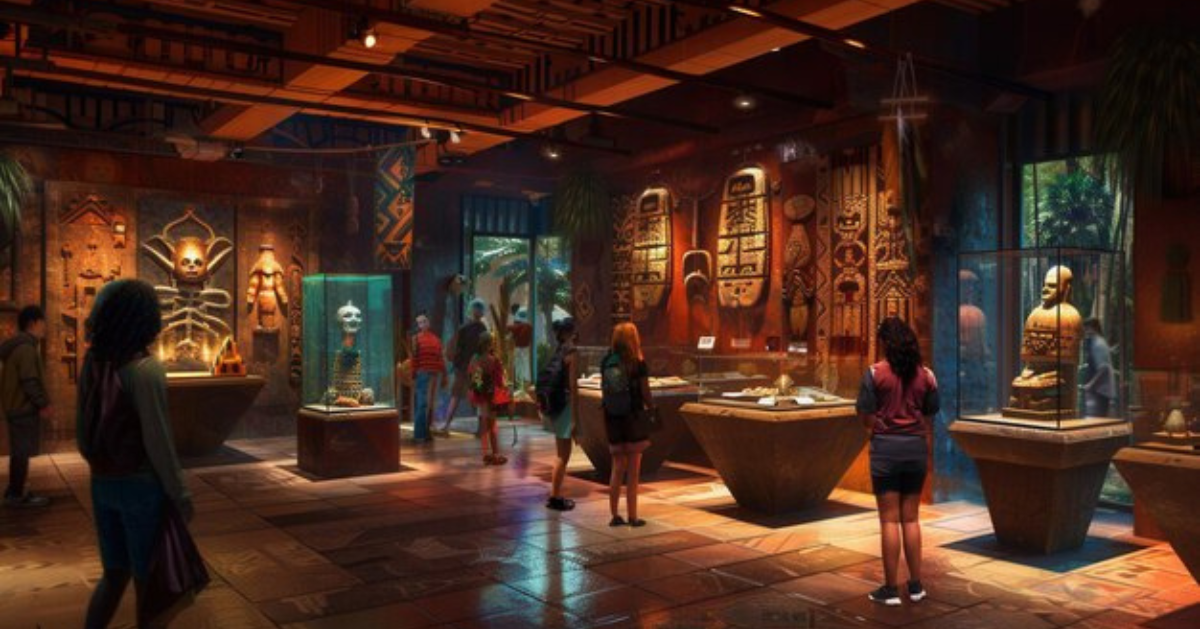ancient artz is a fascinating window into the past, offering insights into the cultures, beliefs, and lifestyles of ancient civilizations. From the intricate carvings of Mesopotamia to the stunning sculptures of Ancient Greece, art has always been a cornerstone of human expression. Let’s dive into the world of ancient art and discover its significance.
What Defines Ancient Art?
Ancient art refers to the artistic creations produced by early civilizations, typically from prehistoric times to the fall of the Roman Empire. These works often had religious, cultural, or practical purposes, showcasing the creativity and ingenuity of early humans.
The Role of Ancient Art in Early Civilizations
Art played a crucial role in early societies, serving as a medium to honor deities, depict myths, and document important events. It also provided a means to establish identity and showcase the achievements of a civilization.
Prehistoric Art: The Dawn of Creativity
Prehistoric art marks the earliest known artistic endeavors. Cave paintings, petroglyphs, and carved figurines such as the Venus of Willendorf exemplify the creativity of early humans. These works often revolved around themes of survival, fertility, and nature.
Mesopotamian Art: The Cradle of Civilization
Mesopotamia, often called the “Cradle of Civilization,” gave rise to impressive art forms. Ziggurats, cylinder seals, and detailed reliefs like the Standard of Ur reveal the sophistication of this early society. Art was closely tied to religion and governance, reflecting the power of rulers and the influence of gods.
Egyptian Art: Eternal Symbols of the Divine
Ancient Egyptian art is renowned for its timeless beauty and deep symbolism. From the pyramids of Giza to intricate tomb paintings, art was integral to their beliefs in the afterlife. Iconic works, like the mask of Tutankhamun, highlight their advanced techniques and love for grandeur.
Greek Art: The Birth of Classical Ideals
Greek art laid the foundation for Western artistic traditions. It evolved through three major periods: Archaic, Classical, and Hellenistic. Renowned for sculptures like the Venus de Milo and the Parthenon, Greek artists emphasized realism, proportion, and humanism.
Roman Art: A Legacy of Innovation
Roman art borrowed heavily from the Greeks while introducing its own innovations. Frescoes, mosaics, and monumental architecture, such as the Colosseum, showcase the Romans’ mastery of materials and engineering. Roman art often celebrated their empire’s achievements and grandeur.
Indian Art: Spirituality and Symbolism
Ancient Indian art is deeply intertwined with spirituality. The intricate carvings of the Ajanta and Ellora caves, along with Buddhist stupas like Sanchi, demonstrate a profound connection to religion. Indian art often employed vibrant imagery and symbolic motifs.
Chinese Art: Harmony and Tradition
Ancient Chinese art reflects harmony with nature and adherence to tradition. Calligraphy, pottery, and bronze works, such as those from the Shang dynasty, highlight their craftsmanship. The Terracotta Army is a testament to China’s artistic and engineering excellence.
Mesoamerican Art: Rituals and Mysticism
Civilizations like the Maya, Aztecs, and Olmecs produced extraordinary works of art. Stone carvings, pyramids, and ceremonial masks reveal their advanced knowledge and spiritual practices. Art often revolved around themes of life, death, and the cosmos.
African Art: The Roots of Tradition
Ancient African art is known for its bold and symbolic designs. From the terracotta sculptures of Nok to the intricate carvings of Benin, African art reflects deep connections to ancestry, rituals, and community values.
The Materials and Techniques of Ancient Art
Artists in ancient times utilized natural materials like stone, clay, metal, and pigments. Techniques such as carving, molding, and painting were perfected over centuries. Each civilization had its own distinct style, influenced by available resources and cultural values.
Symbolism in Ancient Art
Symbolism played a pivotal role in ancient art, conveying complex ideas through imagery. Whether it was the ankh in Egyptian art symbolizing life or the yin-yang in Chinese art representing balance, symbols were powerful tools of communication.
The Influence of Religion on Ancient Art
Religion was a major driving force behind ancient art. Temples, idols, and religious texts were often adorned with artistic elements to honor deities and foster devotion. Art served as a bridge between the earthly and the divine.
Preservation of Ancient Art
Preserving ancient art is crucial for understanding history and cultural heritage. Archaeological efforts, museums, and restoration projects help safeguard these treasures for future generations. However, natural decay and human activities pose ongoing challenges.
The Legacy of Ancient Art
The influence of ancient art is undeniable. It has shaped modern aesthetics, inspired countless artists, and provided a foundation for cultural identity. By studying ancient art, we gain a deeper appreciation for human creativity and resilience.
Why Ancient Art Matters Today
Ancient art is not just a relic of the past; it is a source of inspiration and a reminder of humanity’s shared heritage. It bridges the gap between cultures and eras, fostering a sense of connection and understanding.
Conclusion
Ancient art is a testament to the ingenuity, spirituality, and cultural richness of early civilizations. By exploring these timeless masterpieces, we gain valuable insights into the human experience and the enduring power of creativity.
FAQs
What is the oldest known piece of ancient art?
The oldest known piece of ancient art is the cave paintings in Chauvet Cave, France, dating back around 32,000 years.
Why was religion important in ancient art?
Religion provided inspiration and purpose for ancient artists, as art was often used to honor deities, express spiritual beliefs, and document sacred rituals.
How has ancient art influenced modern art?
Ancient art introduced key concepts like proportion, symbolism, and realism, which have continued to inspire modern art movements and styles.
What materials were commonly used in ancient art?
Common materials included stone, clay, metal, wood, and natural pigments, depending on the resources available to each civilization.
Where can I see ancient art today?
You can explore ancient art in museums like the Louvre, the British Museum, and the Metropolitan Museum of Art, or visit archaeological sites worldwide.

